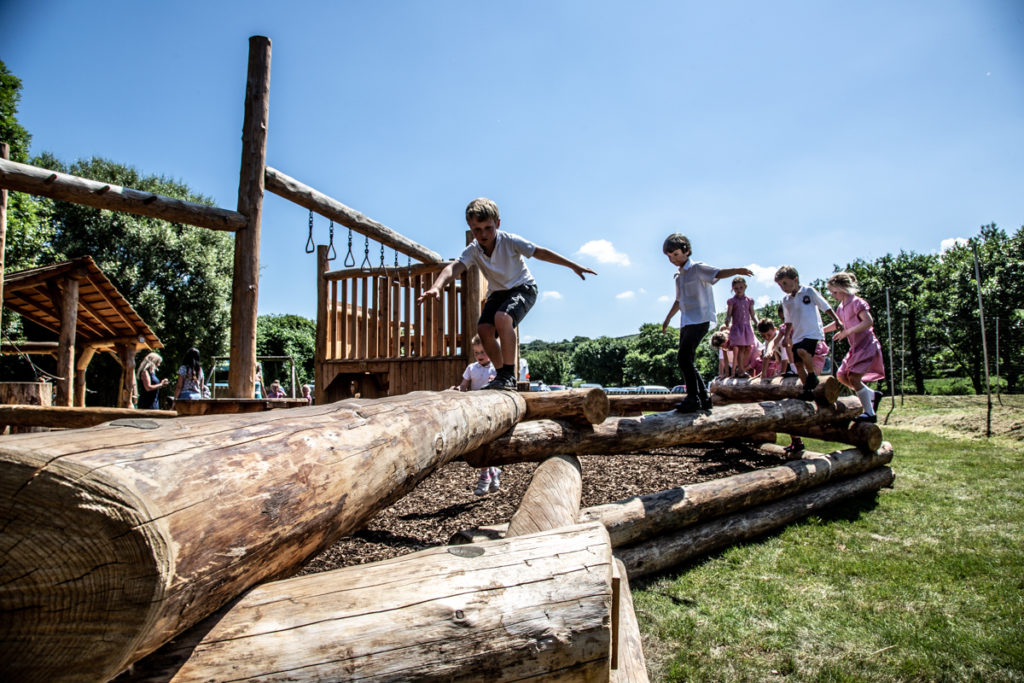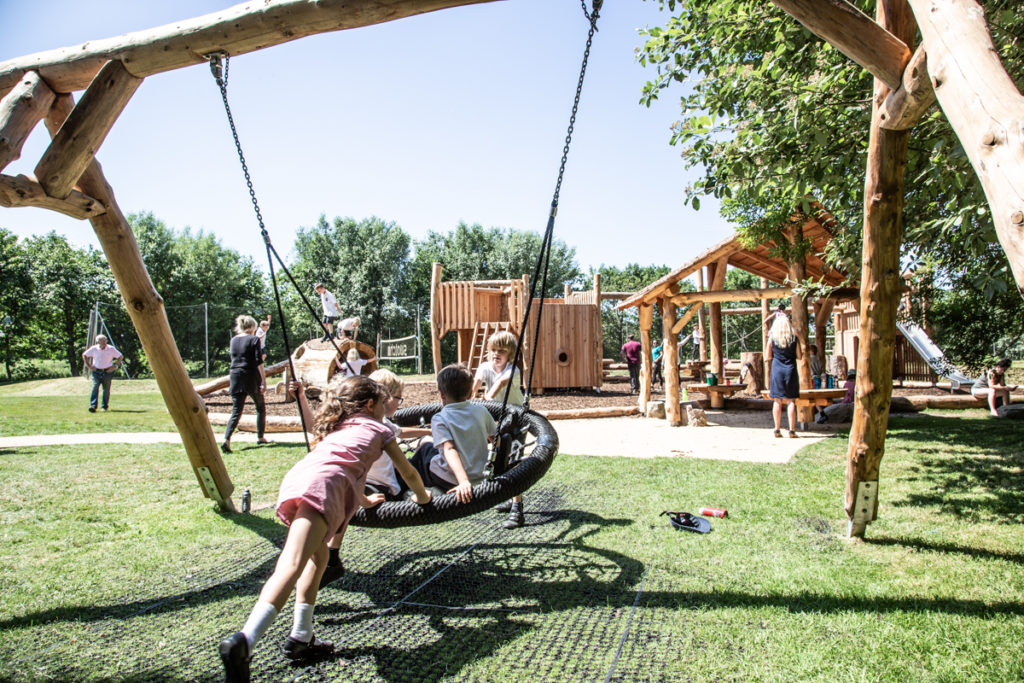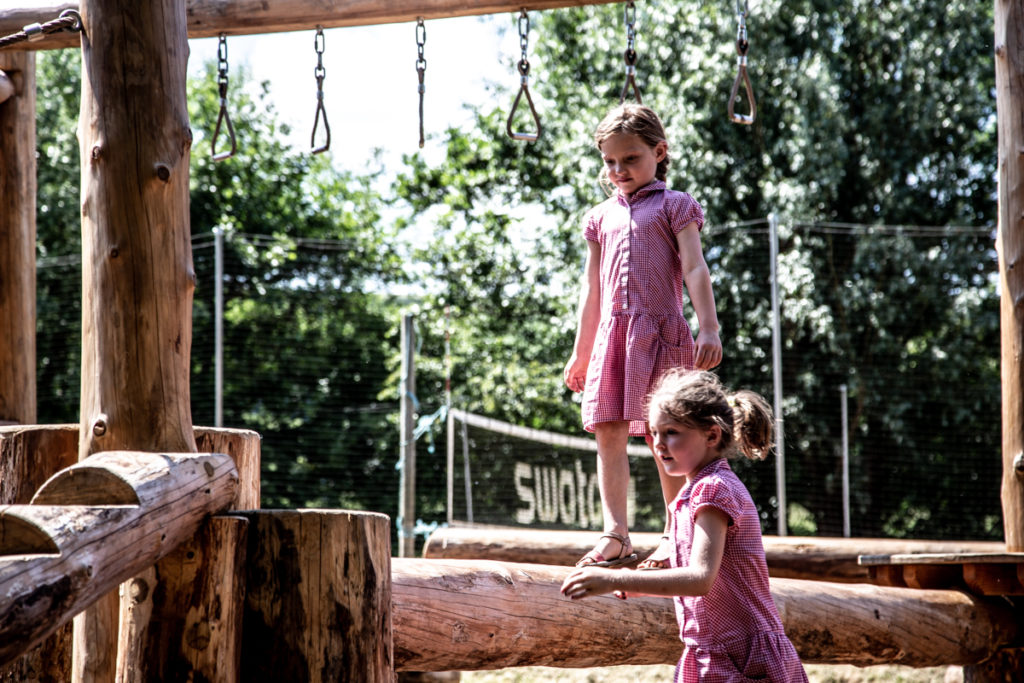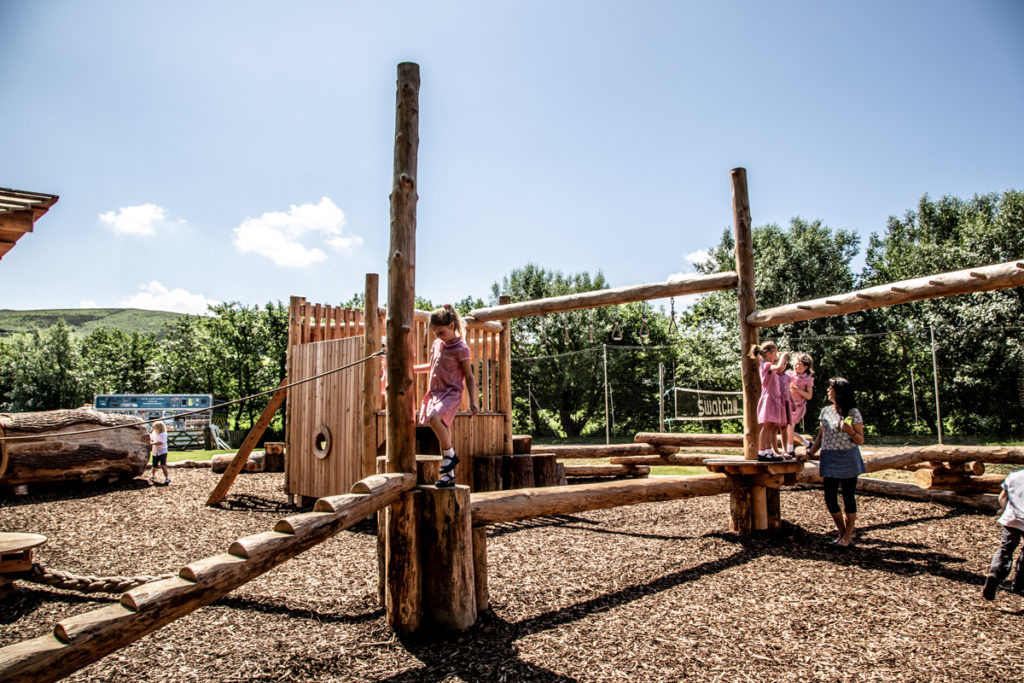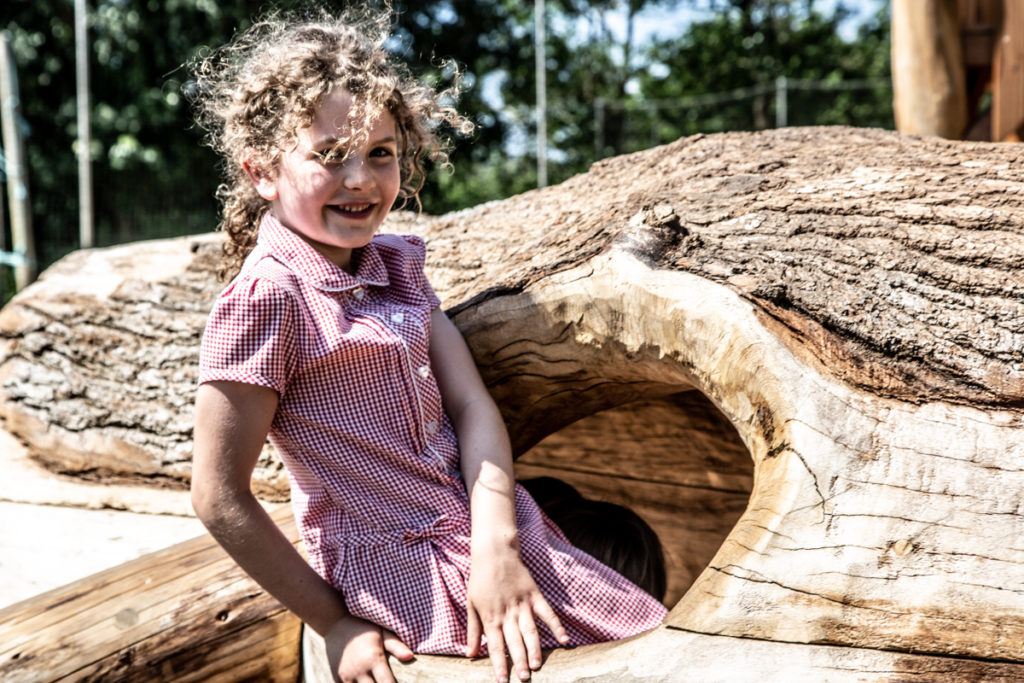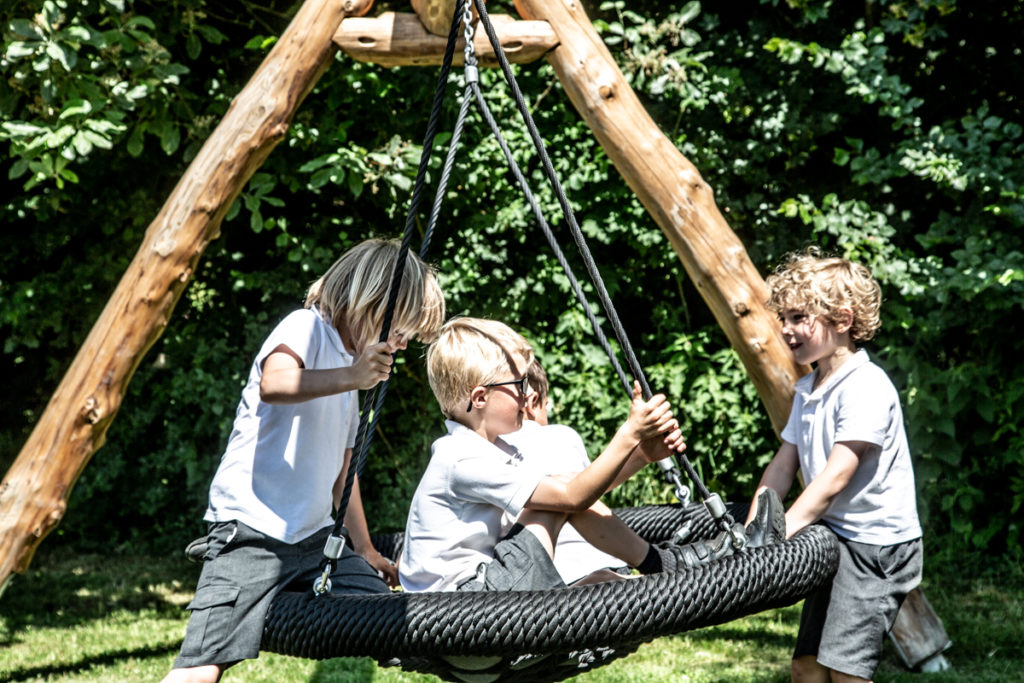The best outdoor playground designs in schools offer rich potential for both children’s play and learning. At TouchWood we believe these are complementary and work together synergistically – what’s good for children’s playful experiences are also good opportunities for learning outdoors. Meaningful times spent engaging with outdoor spaces is enjoyable, and therefore motivational for learning, allowing children to follow their own interests and understand a wide range of topics in context. Furthermore, schools with demonstrable outdoor provision are consistently praised within OFSTED inspections, for their enhanced learning and extended curriculum benefits. Spending regular periods of time outdoors has also been shown to naturally increase children’s physical activity, with both direct health benefits, as well as the potential to increase and extend their learning capacities.
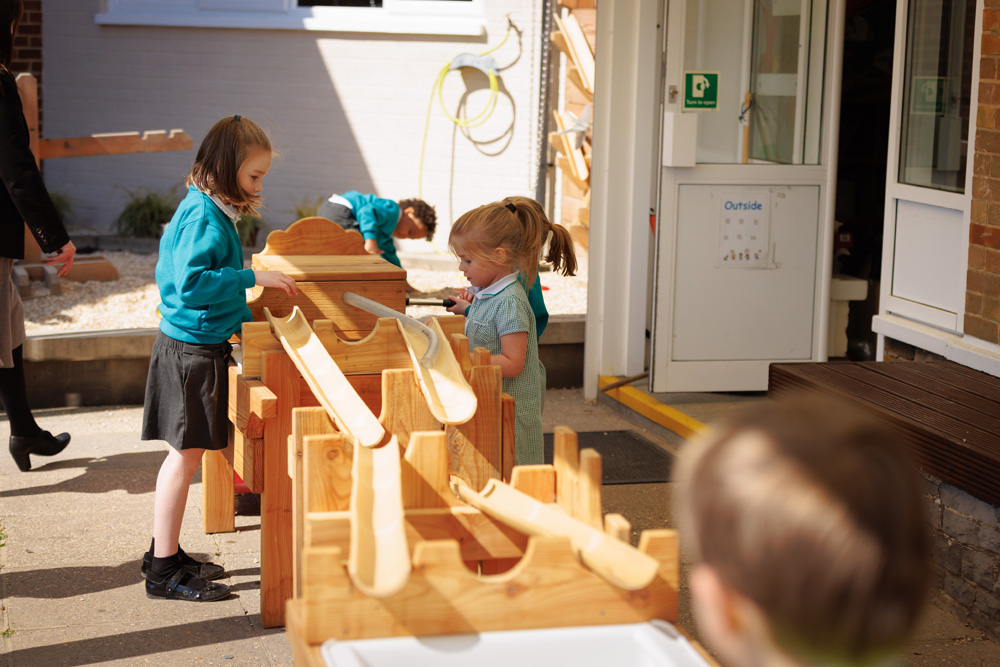
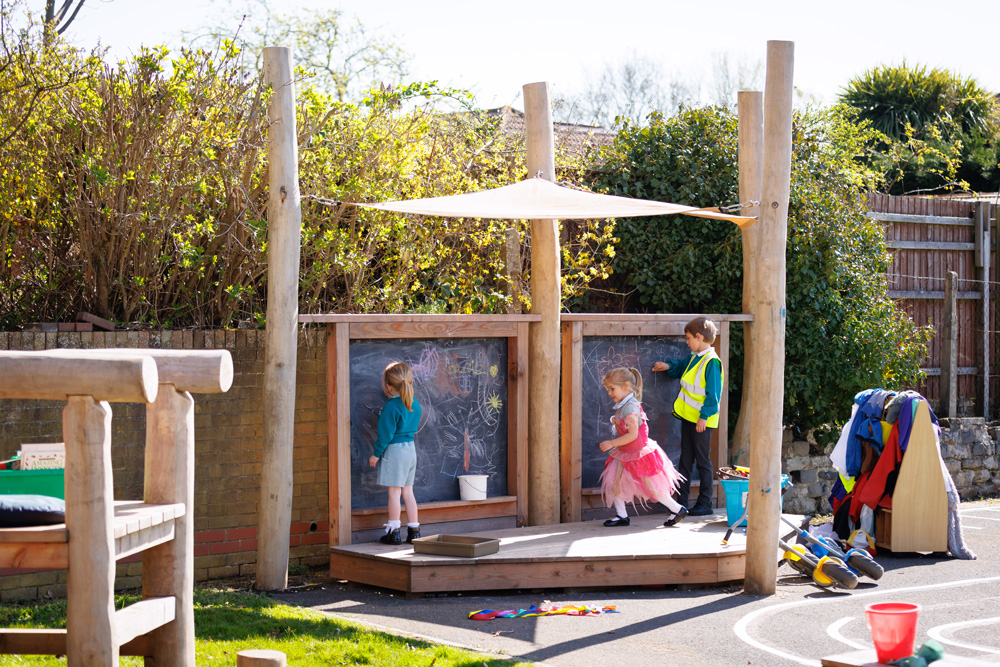
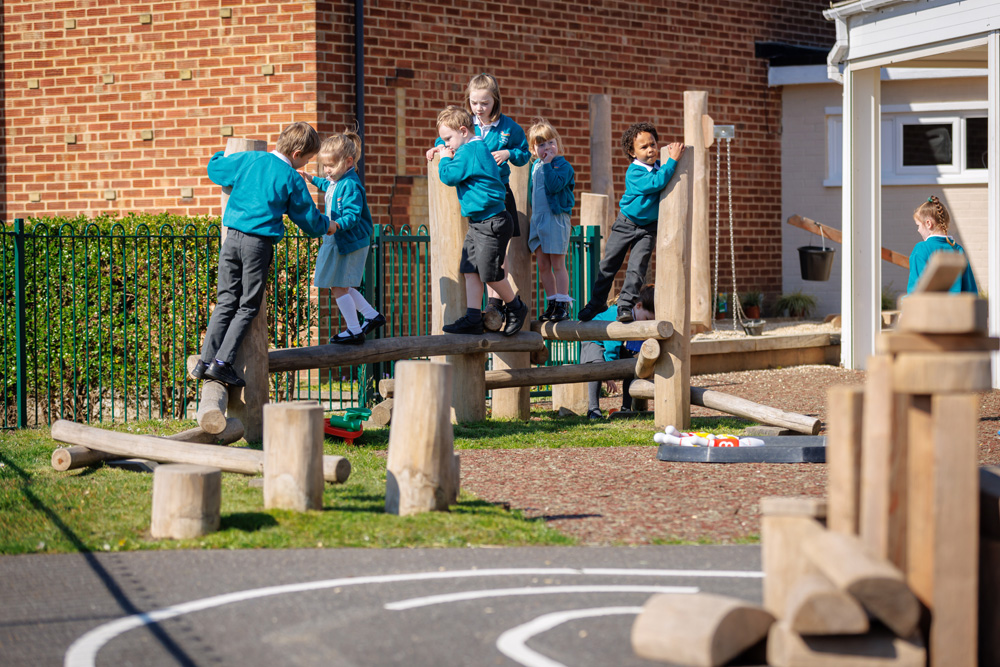
Widespread research has shown that well-designed natural playgrounds afford learning that is memorable, meaningful and contextualised. They can be used for teaching a wide range of topics, subjects, and skill development. In the long-term, opportunities for outdoor learning can increase children’s cognitive skills, self-esteem and confidence to express their ideas; as well as create important connections to nature. We believe that design is crucial to facilitate, hold and extend such play and learning experiences.
As with flexible features – see Blog Two – the best design of outdoor areas for schools are multi-purpose and offer adaptable opportunities for different activities, for different children at different times. In the context of school playgrounds, flexible designs afford opportunities for children’s freely-chosen play as well as directed learning. For instance, an outdoor stage can give children the chance to play with informal performances and social games, but also provide a useful focal point for sharing outdoor learning experiences in a whole class group.
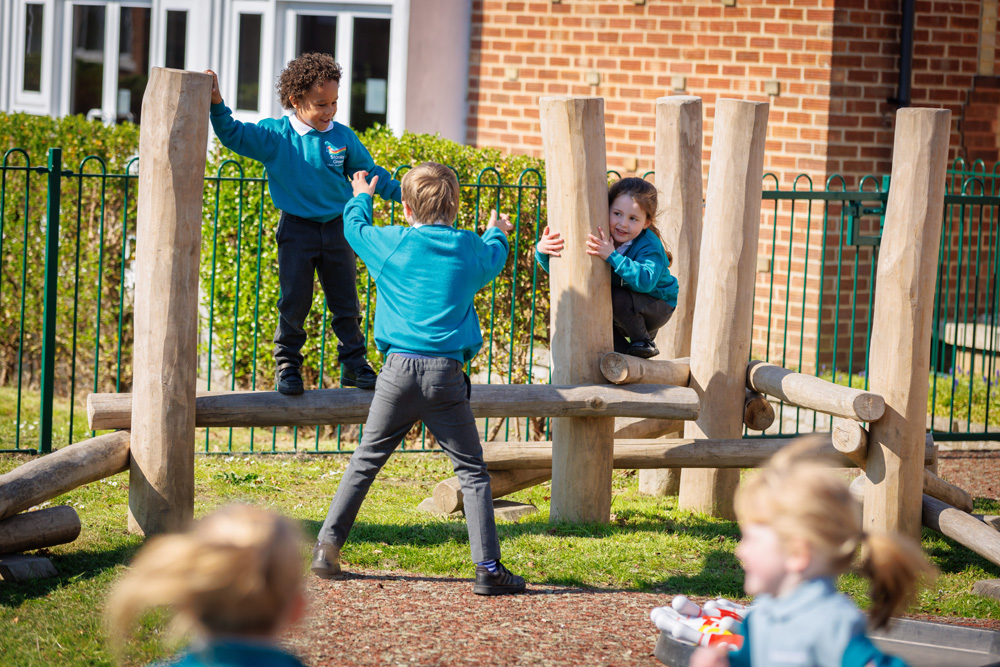
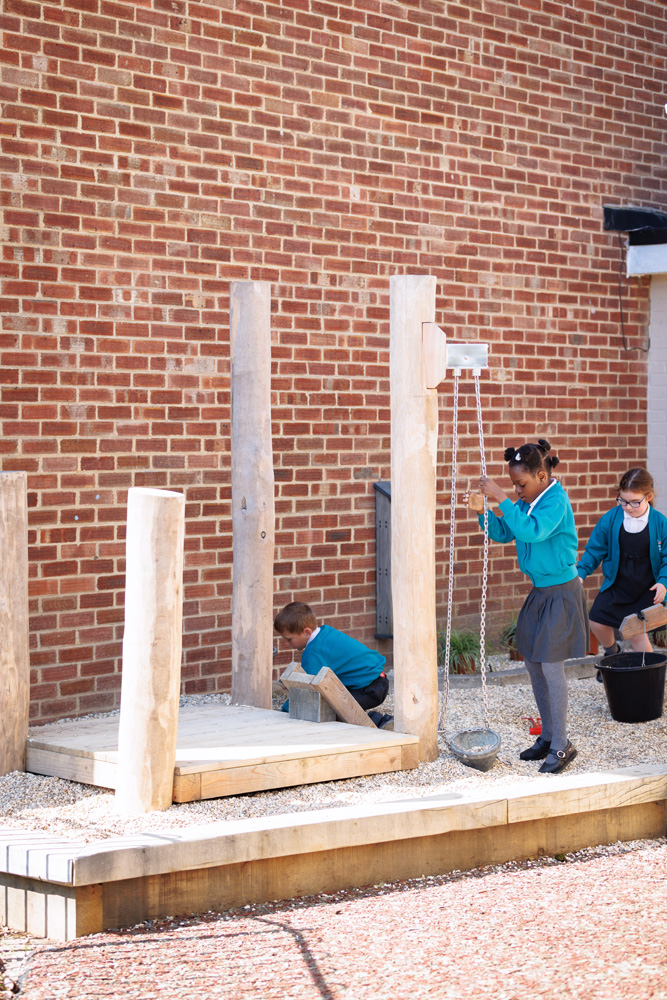
Teaching staff play a vital key in extending the frequency and duration of children’s outdoor learning experiences within schools. Therefore, we believe it is important to provide accessibility, ease of use and conviviality within the design of outdoor spaces so that they feel empowered to use them regularly within the school day. For instance, TouchWood designs for school grounds include and accommodate the potential for seating, shelter, shade and focal points, as well as a range of other innovations for learning outdoors. Through the concept of behavioural settings, our designs can create a mosaic of ‘outdoor rooms’ – or environmental zones – that promote and support certain, desired behaviours e.g. den building or natural science, physical exercise or contemplative writing. Journeys and movement between different zones increase active play behaviours with natural features and invite informal learning, as well as possibilities for nature-connection.
Children enjoy and benefit from independence and choice when spending time outdoors. However, evidence suggests although pupils are rarely engaged in the design of their own play areas or outdoor learning environments within school grounds. At TouchWood we actively involve all members of the school community from the children themselves, to teachers and assistants, management staff and those that look after the space. Each school playground design is specific to the needs and aspirations of the school and the playful possibilities of the space. Through Designing for Real we offer a tried and tested participatory process for creating bespoke outdoor playgrounds that are flexible, fun, and fit for purpose.
